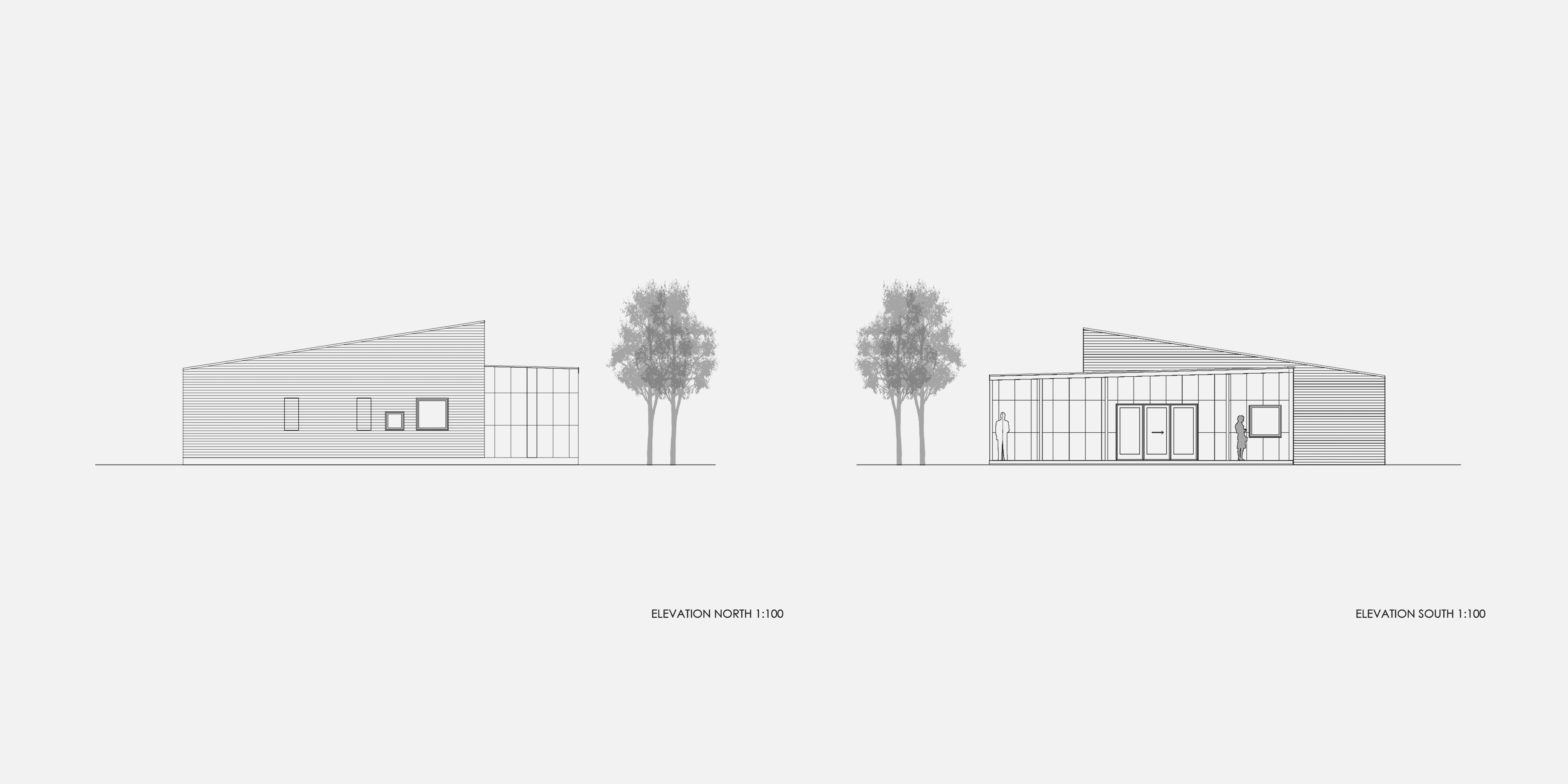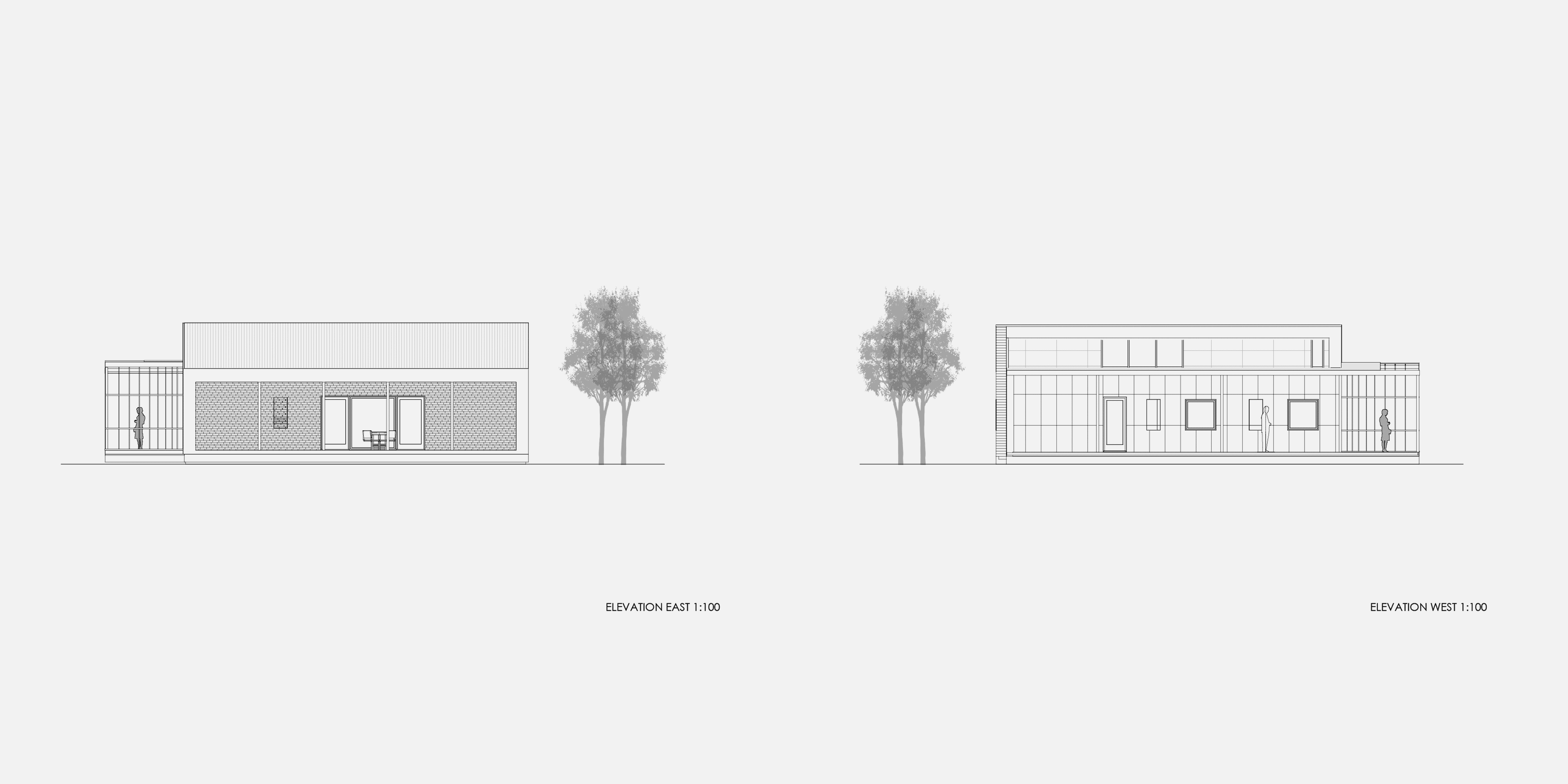Upcycle House is an experimental project, aimed at exposing potential carbon-emission reductions using recycled and upcycled building materials. It was at no extra costs saving 86% CO2.
Upcycle House is built of processed recycled materials. The single-family house investigates how much it is actually possible to reduce the CO2 footprint by using alternative materials to the largest extent possible.
The load-bearing structure consists of two prefabricated shipping containers, while the roof and facade cladding is made from recycled aluminum soda cans. Facade panels, consist of post-consumer recycled granulated paper, which is pressed together and heat-treated. The kitchen floor is clad in tiled champagne cork-leftovers, and the bath tiles are made from recycled glass.
Walls and floors are covered with OSB-panels consisting of woodchips that are bi-products of various production sites, pressed together without glue. The recycled materials are not very visible, and the house does not radiate a recycled look – it looks and functions like a contemporary house built of conventional materials.
Besides the material approach, Upcycle House aims to reduce emissions through an array of sustainable features. Due to the limited economy of the project (1,7 bio. DKK) a special emphasis has been put on the house’s passive properties. Therefore, Upcycle House is designed with orientation, temperature zones, daylight optimization, shading and natural ventilation in mind. This makes it for a single-family house with a significant reduction in emissions, that is also well within economic reach of the average family.
“We initially thought that a reduction of 65% CO2 was unrealistic, but when we ran the LCA (Life Cycle Assessment) on all materials throughout the entire project, it turned out that we had reduced the CO2 emissions associated with construction with 86%, compared to a benchmark house. With that in mind, we are surprised that no one else is working on this. Why is it not included in everything we do as architects? Why is it not included in the building code that a certain percentage of building materials have to be recycled?”, Anders Lendager said to ArchDaily in 2013.





















